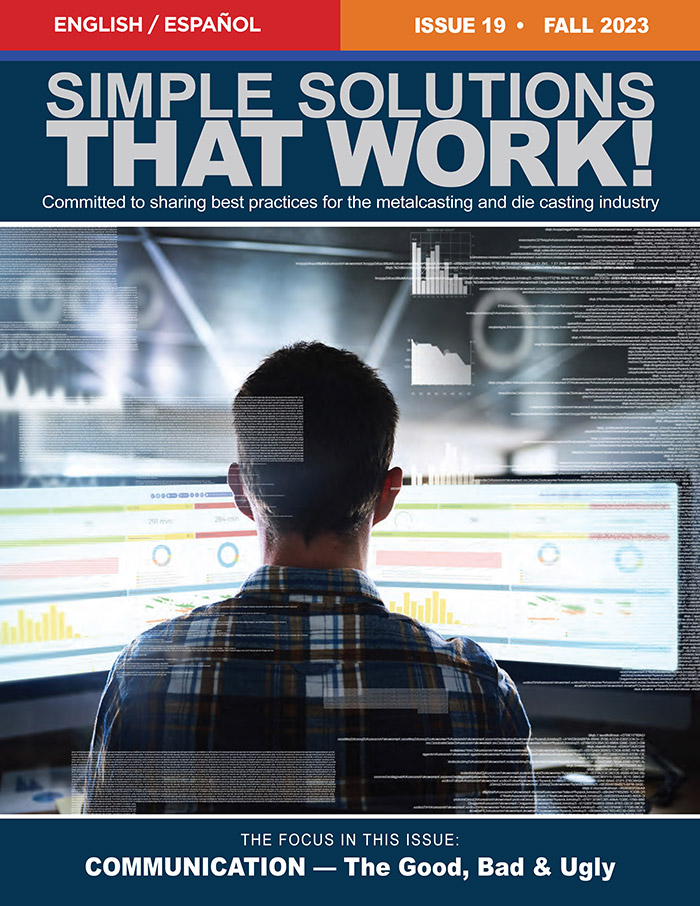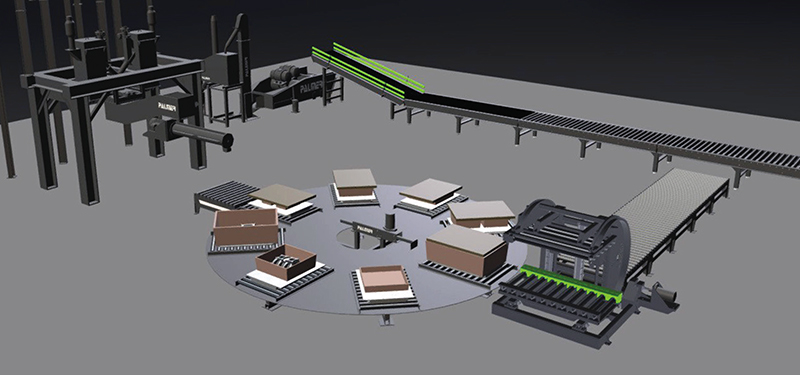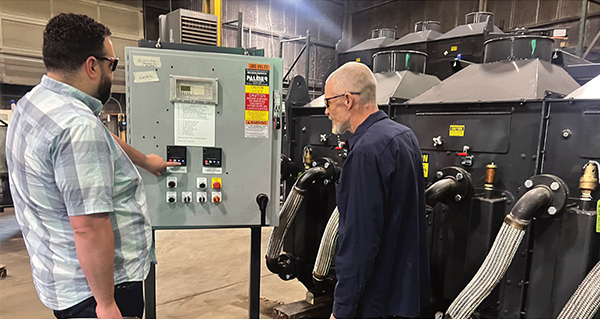Foundry & industrial processing Machinery EQUIPMENT & SYSTEMS
U.S. & Canada Call 1.800.457.5456
Review, Restate & Verify
Home Articles Review, Restate & Verify

Simple Solutions That Work!™, Volume 19, September. 2023
Written - Jack Palmer
Jack Palmer
President
Palmer Manufacturing & Supply, Inc.
ARTICLE TAKEAWAYS:
As a custom, machinery, design and build company, communication is absolutely critical and the difference between delivering custom equipment on-time, or reworking it on the shop floor and delivering late.
In this article I am going to discuss the importance of our internal production floor communication as well as the different methods we use to verify to our customers the various custom technologies we deploy.
Everything happens on the production floor. New ideas, enhanced automation, control panels that continue to do more, welding, machining, and more, all takes place on the production floor. In a custom shop like ours, every piece of equipment, is different. Having floor assemblers that understand the task at hand is paramount.

REVIEW & RESTATE
A few years ago, I watched how a production manager taught our floor assemblers to not only listen, but to comprehend. Our manager typically gave these pretty common instructions to the floor assembler:
"Torque the shaft set screws to 50 pounds, re-run a continuous ground wire from the mixer operator enclosure all the way back to the main control panel with no terminals involved, center paint the discharge of the machine safety, yellow."
Then he asked the employee to restate what he had said. I was amazed when I heard: "Tighten the set screws, check the ground wire for continuity through the terminal strips, and paint the front of the machine yellow."
Clearly, the floor assembler had not understood the instructions. To correct the matter, he then reviewed each instruction, having the operator restate the requirement and why, until the operator comprehended it well enough to restate it back completely. After going through this process a few times, our employees began both listening, comprehending, and restating better.
With over 50 lines of machinery, with each one having a number of potential options, and we will design pretty much anything a customer wants. Communicating and ensuring comprehension is the only way our custom machines are made properly.
There are so many moving parts in the design and production of custom equipment. Our process begins with the customer and the sales engineer, to quoting and then to engineering, purchasing, production, inspection, quality control, and shipping.
With so many people, processes and requirements, while coupled with a robust ERP system (SAP), and CRM; nothing replaces clear and simple instructions that are well understood from the get go.
We have a kickoff meeting for each and every machine or system that we design. Sales, engineering, purchasing, and production are all involved so that all the instructions are given to the correct people all at the same time. Questions are asked, answers are given, and if the answer requires research, it is listed on the check off meeting report, and those questions are answered in a timely manner.
Customer changes or perhaps a change in the order due to supply change issue is place where communication potentially can fall apart. For these critical changes, while we rely heavily on our ERP system for documentation and collaboration, we also use our important production meetings to have face to face communications to—review and restate the change to all parties.

VERIFY
For verification of what a piece of equipment can do, we often use visualization methods that can range from quick videos from our phones, to virtual reality and everything in between. We find that customers prefer seeing it in action above anything else.
While will do our best to show a process or piece of equipment on-site at a customer’s location, sometimes this isn’t convenient or possible.
As a custom manufacturer, we are really specialists in material handling. As our customers produce larger and more complex parts, sometimes we are truly developing equipment to manage their production in revolutionary ways, with enhanced technology.
Showing a customer how this will work, can involve several different methods. For example, to envision a production floor layout, our customers really benefit from placing them in virtual reality with their operators. In that environment, they can pick up the equipment for their desired layout. For other processes, 3D animation works well. In other instances we take video of run-offs at our location, for future reference and documentation. We also use tons of traditional video production along with photography. As you can image, we find all of these methods work better than simply showing a drawing.
There are plenty of software solutions to help manage projects. And while we use many of them, nothing beats the clarity of an operator that can restate the task at hand on the production floor. And, while you can talk about a technology with tremendous enthusiasm, nothing can show case this like a piece of equipment in production for the customer to see.
Copyright © 2024 Palmer Manufacturing & Supply, Inc. | Terms and Conditions | Privacy Policy
Web published by Marketing Options, LLC.




